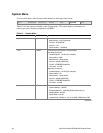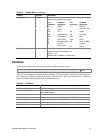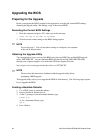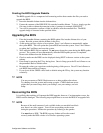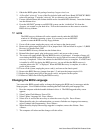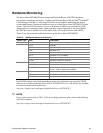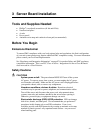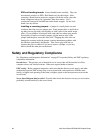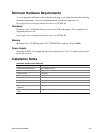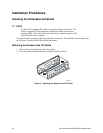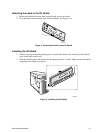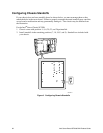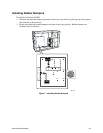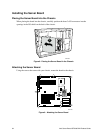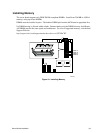48 Intel Server Board SE7500CW2 Product Guide
ESD and handling boards: Always handle boards carefully. They can
be extremely sensitive to ESD. Hold boards only by their edges. After
removing a board from its protective wrapper or from the server, place the
board component side up on a grounded, static free surface. Use a
conductive foam pad if available but not the board wrapper. Do not slide
board over any surface.
Installing or removing jumpers: A jumper is a small plastic encased
conductor that slips over two jumper pins. Some jumpers have a small tab on
top that you can grip with your fingertips or with a pair of fine needle nosed
pliers. If your jumpers do not have such a tab, take care when using needle
nosed pliers to remove or install a jumper; grip the narrow sides of the
jumper with the pliers, never the wide sides. Gripping the wide sides can
damage the contacts inside the jumper, causing intermittent problems with
the function controlled by that jumper. Take care to grip with, but not
squeeze, the pliers or other tool you use to remove a jumper, or you may
bend or break the stake pins on the board.
Safety and Regulatory Compliance
See “Regulatory and Integration Information” on page 87 for product Safety and EMC regulatory
compliance information.
Intended uses: This product was evaluated for use in servers that will be installed in offices,
computer rooms, and similar locations. Other uses require further evaluation.
EMC testing: Before computer integration, make sure that the chassis, power supply, and other
modules have passed EMC testing using a server board with a microprocessor from the same
family (or higher) and operating at the same (or higher) speed as the microprocessor used on this
server board.
Server board diagram label provided: Place the label inside the chassis in an easy-to-see location,
preferably oriented similarly to the server board.



